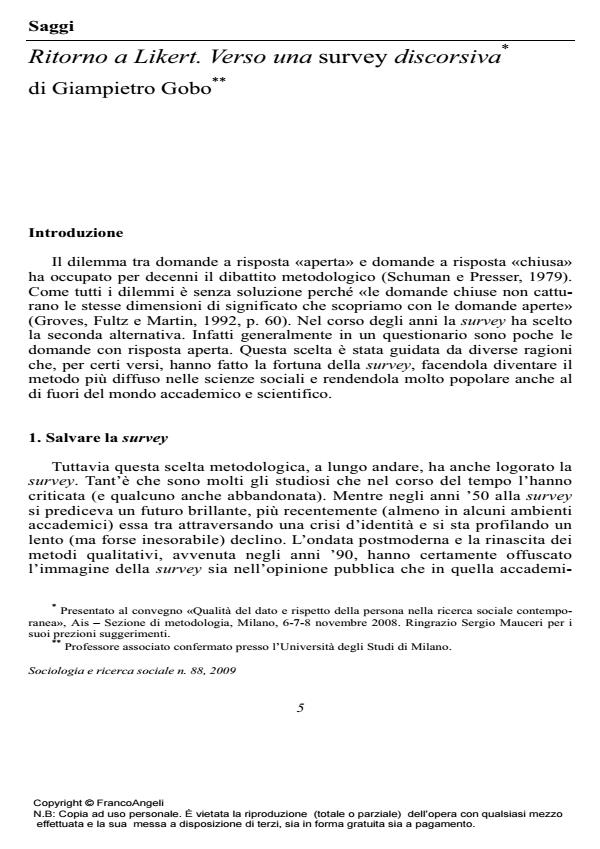Ritorno a Likert. Verso una survey discorsiva
Journal title SOCIOLOGIA E RICERCA SOCIALE
Author/s Giampietro Gobo
Publishing Year 2009 Issue 2009/88
Language Italian Pages 24 P. 5-28 File size 361 KB
DOI 10.3280/SR2009-088001
DOI is like a bar code for intellectual property: to have more infomation
click here
Below, you can see the article first page
If you want to buy this article in PDF format, you can do it, following the instructions to buy download credits

FrancoAngeli is member of Publishers International Linking Association, Inc (PILA), a not-for-profit association which run the CrossRef service enabling links to and from online scholarly content.
Back to Likert. Towards the Conversational Survey - For decades, the dilemma between open-ended and closed-ended response alternatives occupied the methodological debate. Over the years, dominant approaches in survey have reacted to this dilemma by opting for fixed response alternatives and the standardization of interviewer’s behaviour. If this methodological decision has been the survey’s fortune, making it the methodology most widely used in the social sciences, however it produces a large amount of biases well known in the literature. In order to re- medy these biases an alternative proposal can be designed by re-discovering and adapting two «old» proposals: Likert’s technique called «fixed question/free answers», and Galtung’s procedure named «open question/closed answer». Both procedures are guided by the same principle: make the interview into a conversation, let the interviewee answer freely in his/her own words, and thus release him/her from the researcher’s schemes.
- Limiti dell'"approccio pragmatico" e insidie della metodologia bricolage. I metodi misti rischiano di riprodurre un'epistemologia positivista sotto mentite spoglie? Giampietro Gobo, in RIV Rassegna Italiana di Valutazione 76/2021 pp.71
DOI: 10.3280/RIV2020-076005
Giampietro Gobo, Ritorno a Likert. Verso una survey discorsiva in "SOCIOLOGIA E RICERCA SOCIALE " 88/2009, pp 5-28, DOI: 10.3280/SR2009-088001